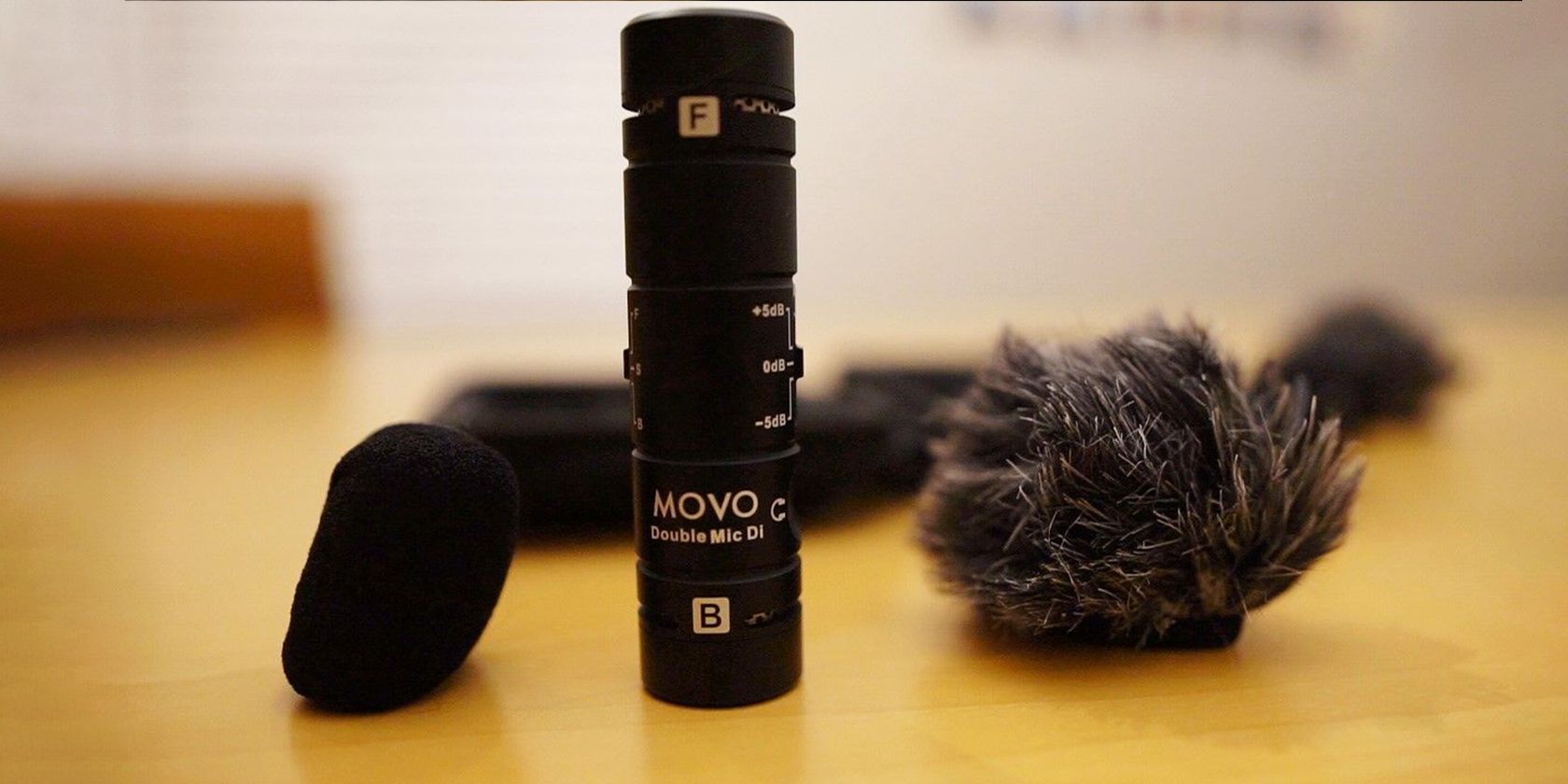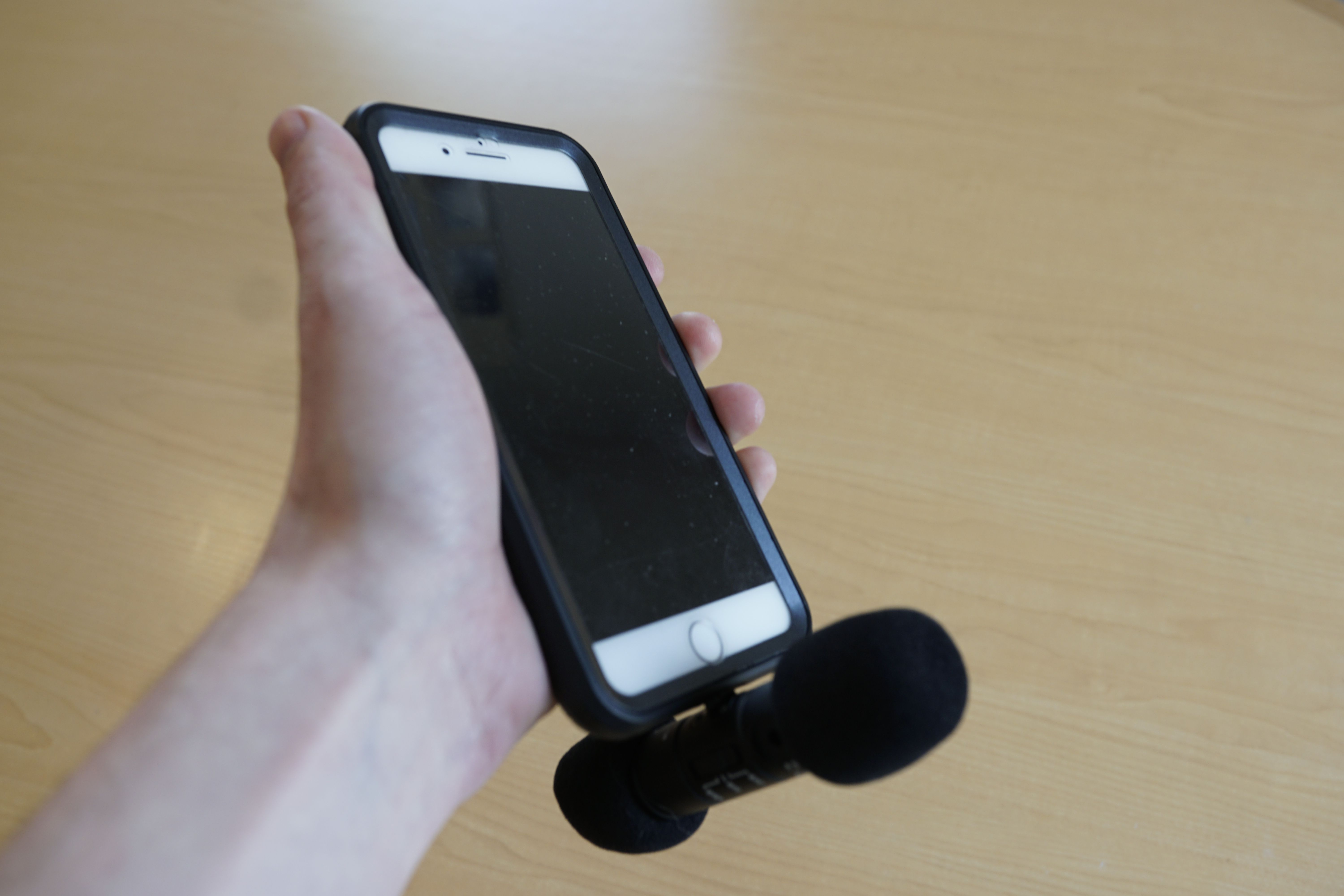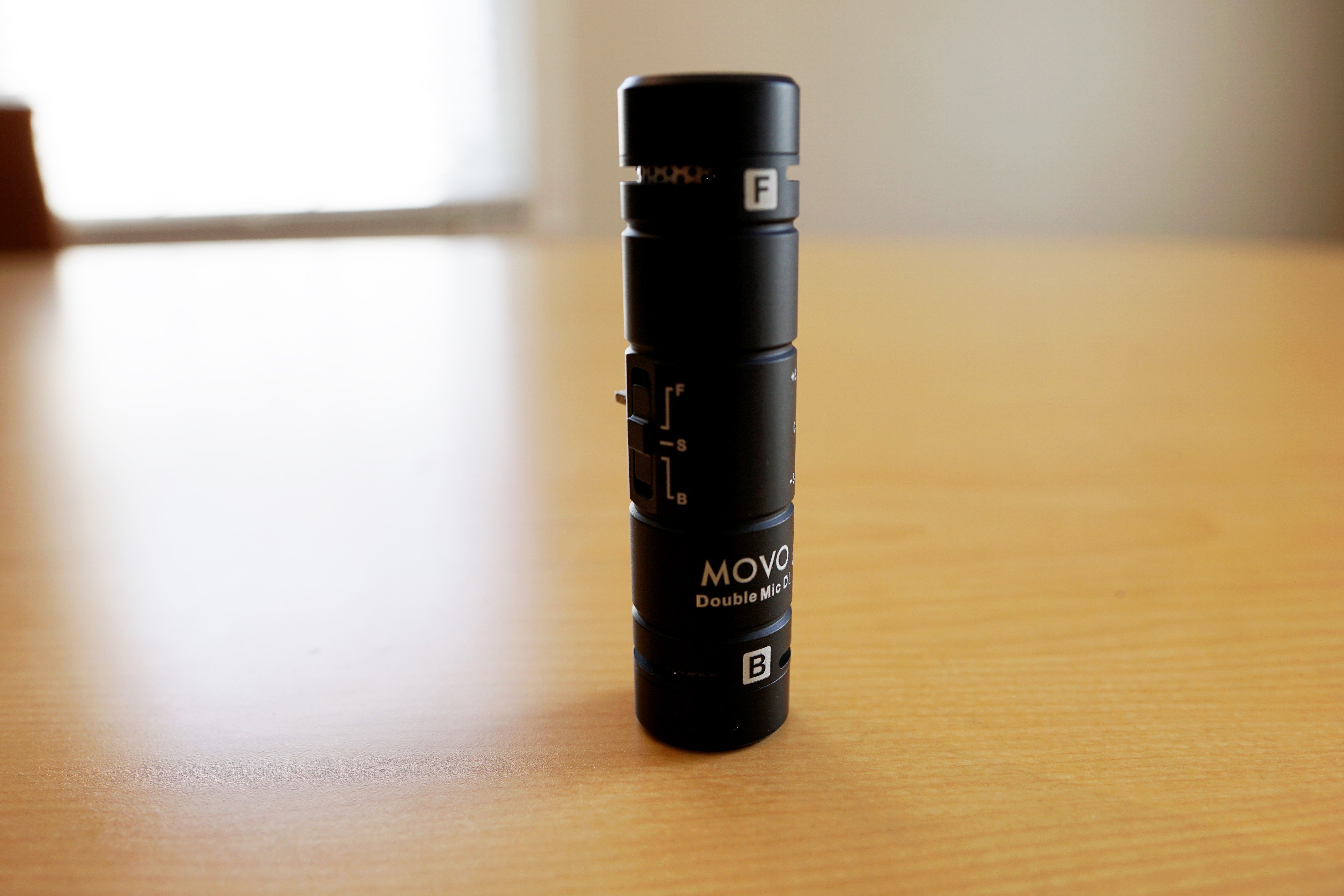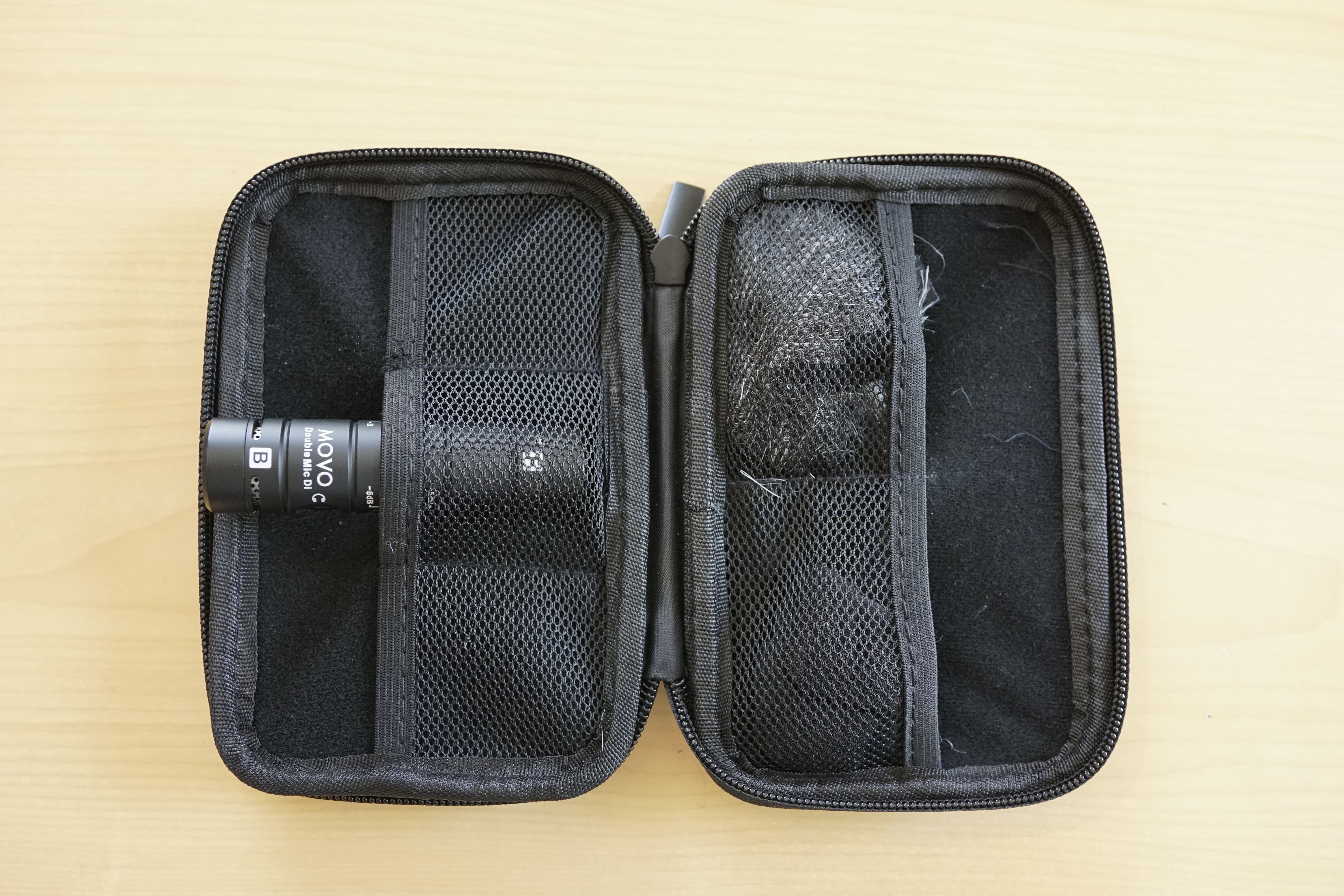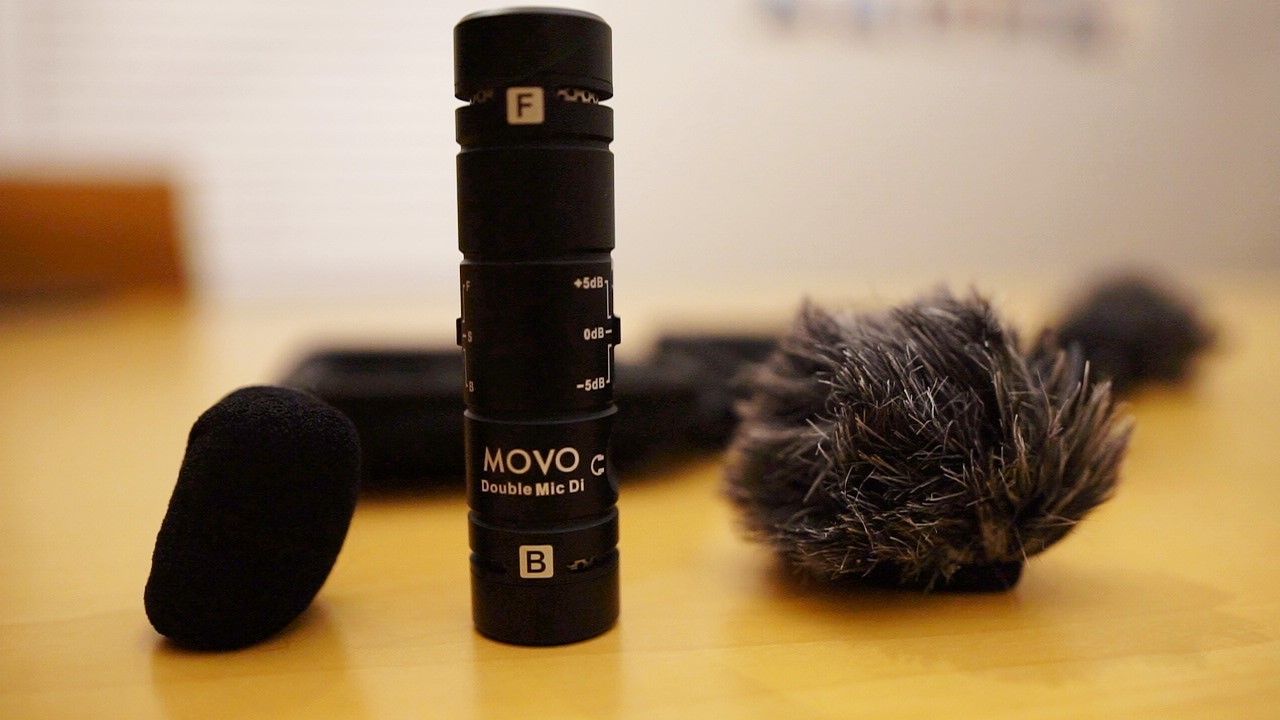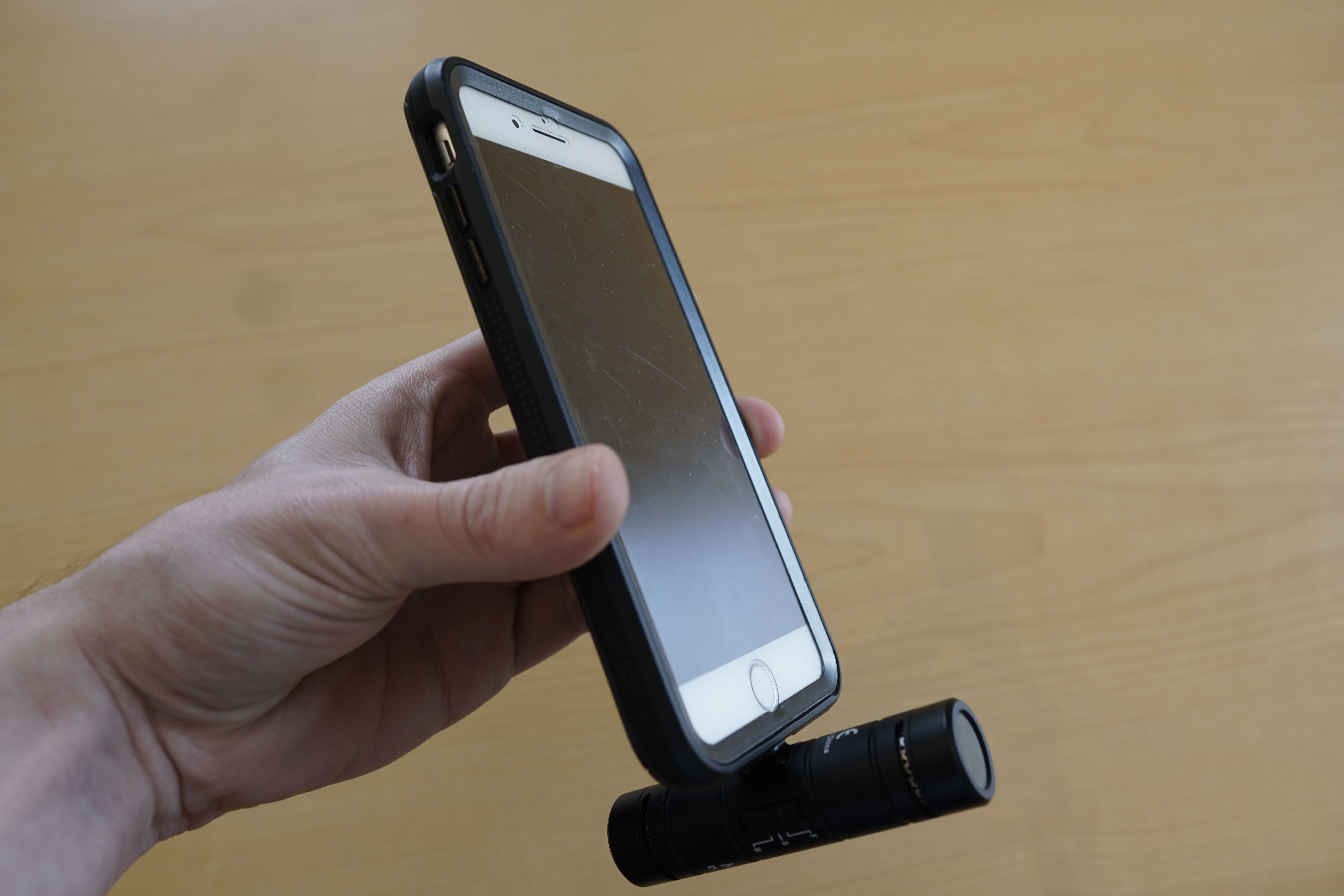Movo DoubleMic Di
The DoubleMic Di does improve upon the iPhone’s onboard microphone. The improvements in audio quality seem slim, but moreover, the Lightning port direct connectivity means that it can’t reliably maintain this quality under any conditions where it isn’t mounted perfectly still.
If you’re in the market for a microphone and have a budget of about a hundred dollars, there are countless high-quality options. If you’re looking for a microphone that is specifically compatible with your smartphone, your options might be a little more limited. There are even fewer options that are as convenient as the Movo Double Mic Di and don't require an adaptor
- Brand: Movo
- Type: Condenser
- Pattern: Cardioid
- Power: Supplied By iOS Device
- Audio Sensitivity: 25dB; 30dB; 35dB
- Connector: MFi-Certified Lightning Connector
- Weight: 47g
- Frequency Bandwidth: 44.1 kHz / 48 kHz
- Microphones: Dual-Capsule
- Sensitivty: -36+/-3dB(0dB=1V/Pa,at 1KHz)
- Dimensions: 86.0 x 22.9 x 32.6mm
- Included Accessories: 4 wind caps (2 foam, 2 fur)
- Signal to Noise Ratio: 80dB
- Analog Outputs: 3.5mm headphone jack
- Intuitive Design
- Very convenient and pocket sized
- Unreliable Phone Connection
- Expensive—you're paying for that convenience
The Movo Double Mic Di is an iPhone-compatible microphone attachment. Boasting a minimal and compact design, it shows promising potential to be an ideal upgrade to any iPhone video producer’s arsenal. But does it live up to its $95 asking price?
Features
The Movo DoubleMic Di is a dual capsule, condenser microphone. Dual capsule, as the name suggests, meaning that this is a double microphone, with a front and back facing input. The Movo is also a condenser mic, meaning that it’s directional. So, for the best results, you’ll want the Movo pointed directly at whatever it is you’re trying to record—in between your subject, and you.
Probably the most convenient thing about the DoubleMic Di is the fact that it plugs directly into your iPhone’s lightning port, with no adaptor or additional cabling required. There is no need to charge it or even turn it on, as it draws power from your phone. Simply attaching it to your iPhone in this way will also set it as your phone’s default microphone.
Out Of The Box
The sleek hard case that the Movo comes in looks great and feels great to hold. But, upon taking a look inside, you’ll find that the case is mostly empty.
As mentioned, the only thing the Movo needs in order to function is to be plugged into your iPhone, so there is no need for cables or other accessories you might expect to come packaged with a microphone. The only other thing inside the case are four windsocks.
It’s to be expected that the microphone itself isn’t very big, it is a phone attachment after all. But having a storage solution be quadruple the appropriate size may leave some consumers looking for alternatives between uses.
Using The Movo
Using the microphone is as simple as setting it up. The entire interface of the DoubleMic Di is limited to two switches on either side of the mic. On the right, front-facing side of the Movo you’ll find a switch for controlling the decibel sensitivity for whichever mic is activated. There is a setting for +0.5db, +0.0db, and -0.5db. These settings will be useful depending on the environment you're recording in, and even without a firm understanding of decibel levels, the Movo's interface makes for an easy learning curve.
On the opposite side, you’ll find a switch labeled, “F”, “S”, and “B”, corresponding to the labels of the front facing (F) and backward-facing (B) microphones. The, “S” setting in the center of the switch is for Stereo, which will activate both the front and back facing mics at the same time. Unfortunately, even though it's described as stereo, recording with both mics active at the same time will actually be captured on a single audio channel.
This two-switch design is probably the DoubleMic Di's biggest achievement. Within a few minutes of opening the box, you'll be able to fully understand how to use the mic even if you've never used anything similar before. Movo really did a great job at making this thing accessible for users who have only ever recorded audio or video on an iPhone.
The only other feature to speak of on the Movo itself is a headphone jack that you could use to monitor your audio levels while using the mic. Something odd about this feature that I think warrants being pointed out is the fact that the headphone jack on the Movo is a standard auxiliary port and not an Apple-friendly one like the lightning port. It seems like a bizarre and design choice to make an accessory for a product that is incompatible with the product’s other accessories, but at the end of the day, this isn’t an apple product. So you’ll be able to check audio levels using the Movo the same way as any other microphone—you just won’t be able to do it with the same headphones your iPhone came with.
Audio Test
So how does the DoubleMic Di actually perform? I took the Movo outside to conduct a field test in a scenario that I thought it would be most useful for: on a windy day near a busy street. I recorded myself speaking into my phone, once with the Movo attached equipped with windsock, and set to -0.5db. Then again while just using my iPhone’s native microphone. Listening to a side-by-side comparison of my voice samples, it’s difficult to distinguish which sample is which.
Testing the Movo was off to a rough start then, but I thought, surely if I turn away from the street and use the directional advantage of the condenser microphone, I’ll pick up less background noise and it will sound superior to the previous two recordings. However, this is when I began noticing some of the potential design flaws of the DoubleMic Di.
All of my subsequent recordings were full of loud clipping and popping with moments of complete loss of audio. These awful clipping noises came from the Movo having connectivity issues with my phone. The connection point at the lightning port has a fair bit of wiggle room. Any amount of movement at the point of connection from the mic to the phone will result in serious problems with the audio. This happens with or without a case, and with the mic oriented on the top or bottom.
As you can see from the way the mic is situated when connected to the phone, it sticks out a few inches on either side. This leaves it all the more prone to being bumped or jostled since it lies perpendicular to your iPhone while in use. So unless you’re also using a gimbal, tripod, or some other type of mount for your phone while recording, it seems like the Movo disconnecting from your phone could be a fairly common problem.
But what about less dynamic situations? Sure, the Movo might seem best suited for improvisational, run-and-gun style recording, but maybe you’re not worried about the connectivity issues and just want a high-quality microphone to boost the production value of your iPhone-captured videos. How does the DoubleMic Di stack up then?
Well, much like in the first test of my outdoor scenario, it was tough to tell which sample was recorded with the Movo and which one came from strictly using my phone. For $95, I think most people would expect a more noticeable improvement.
A Slight Improvement In Audio Quality That Remains Inconsistent
The DoubleMic Di does improve upon the iPhone’s onboard microphone. The improvements in audio quality seem slim, but moreover, the Lightning port direct connectivity means that it can’t reliably maintain this quality under any conditions where it isn’t mounted perfectly still.
If you’re in the market for a microphone and have a budget of about a hundred dollars, there are countless high-quality options. If you’re looking for a microphone that is specifically compatible with your smartphone, your options might be a little more limited. There are even fewer options that are as convenient as the Movo Double Mic Di and don't require an adaptor. But in any case, a hundred dollars should get you a high-quality mic by any standard, and perhaps it's wiser to invest in something that can be used with more than just a Lightning port.
The Movo DoubleMic Di simply can’t deliver on being a consistent option for capturing audio or of high enough quality to demand its $95 asking price.

